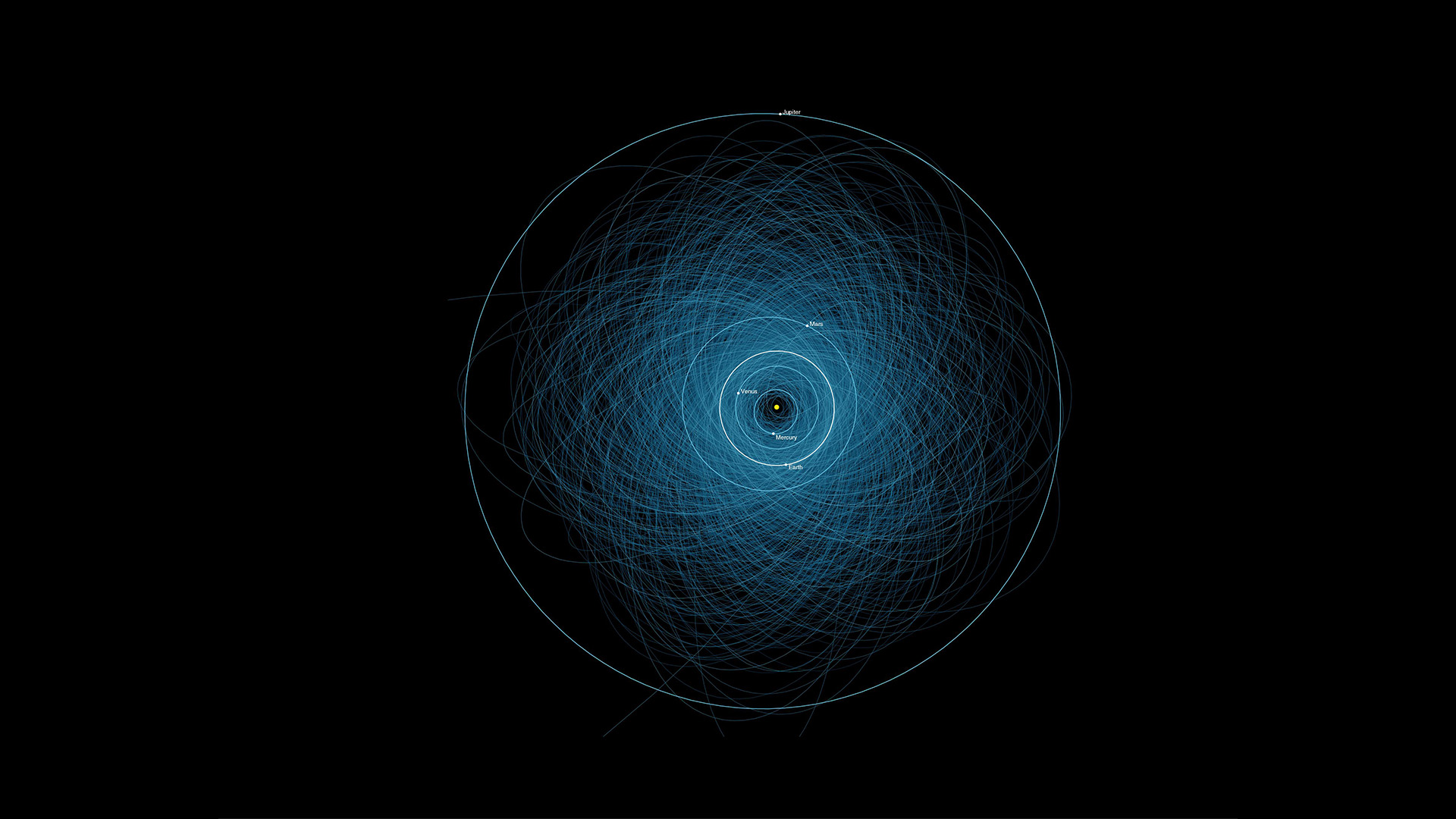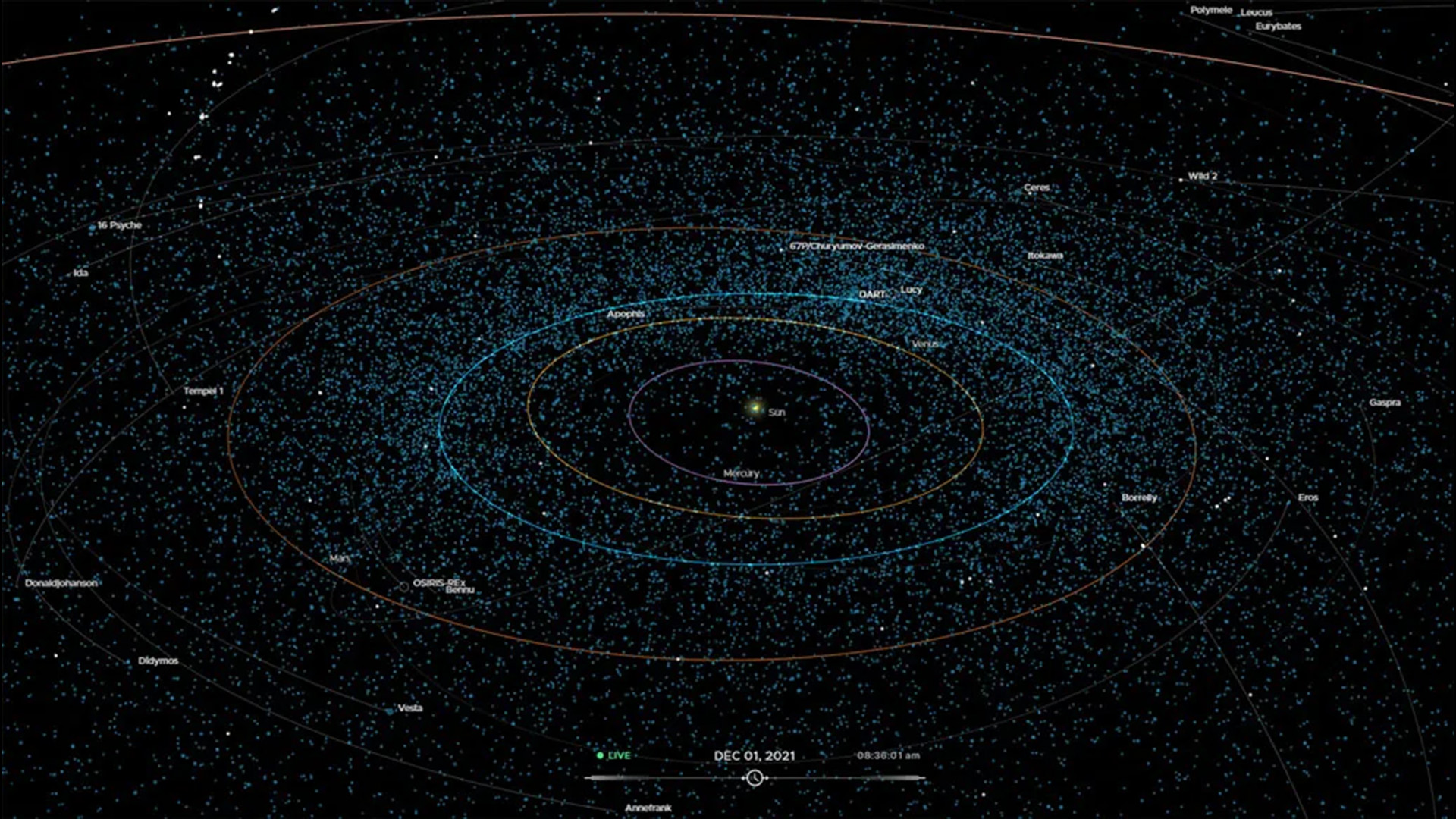
Every year, dozens of asteroids come closer to our planet than the moon is, and yet catastrophic collisions are exceedingly rare. Now, a new study proposes that Earth has a built-in defense system — its intense gravitational forces — that it uses to tackle asteroid interlopers.
The enormous masses of planets and their moons mean they exert tremendous gravitational forces on nearby objects. The differences in gravity these objects experience, called tidal forces because astronomers used them to explain how the moon causes tides on Earth, can be so strong in some cases that the objects get ripped up ― a process called tidal disruption.
In 1994, space enthusiasts got a firsthand glimpse of the awesome power of tidal disruption when pieces of the comet Shoemaker-Levy 9, torn apart by Jupiter's tidal forces during a close encounter two years earlier, crashed into the gas giant. But for decades, astronomers couldn't find evidence that Earth and other terrestrial planets tidally disrupt passing asteroids or comets.
Related: 'Planet killer' asteroids are hiding in the sun's glare. Can we stop them in time?
Mikael Granvik, first author of the new study and a planetary scientist at Sweden's Luleå University of Technology, has long been searching for these gravitationally ripped-apart near-Earth asteroids (NEAs). "Some ten years ago we looked for families of NEAs that would have formed in such tidal disruptions, but didn't find any," Granvik told Live Science in an email. A follow-up study explained why: Any fragments formed this way would "mix with the background so quickly" that identifying a specific family is impossible, he said.
The hunt for gravitationally torn asteroids remained at a dead end untilGranvik had a flash of insight. In 2016, he helped create a model that calculated the trajectories of asteroids of different sizes to determine their numbers at different distances from the sun.
Granvik and his colleagues compared their model's results with seven years' worth of asteroid observations collated by the Catalina Sky Survey, a NASA-funded Arizona telescope-based program that detects NEAs. But their estimates vastly underpredicted the numbers of certain asteroids ― those spotted at the distances at which Earth and Venus orbit the sun. Most of these missed asteroids were pretty small, chugging along roughly circular paths around the sun, more or less within the same plane as the orbits of Earth and Venus.

Then came Granvik's eureka moment. He realized these oddball asteroids could be tidally disrupted fragments of larger asteroids.
To check this idea, Granvik and co-author Kevin Walsh, a researcher at theSouthwest Research Institute in Colorado, considered a scenario where asteroids that encountered rocky planets lost between 50% and 90% of their mass, generating streams of fragments. Now, their model correctly accounted for the previously unexplained asteroids, suggesting they had been created by tidal disruptions. They described the findings in a new study, which has been accepted for publication in The Astrophysical Journal Letters and is available on the preprint database arXiv.
"While individual families are hard to find, the combination of multiple families will produce a signature that we can identify," Granvik said. Additional simulations showed such fragments hung around a really long time, lasting an average of 9 million years before colliding with the sun or a planet or getting kicked out of the solar system.
Tidal disruption caused by Earth may help tackle asteroids, but it creates problems too, by generating more NEAs that are likely to strike our planet. Don't panic, though — because these fragments are smaller than 0.6 mile (1 kilometer) in diameter, "they don't pose an extinction-level threat," Granvik said. However, they do "increase the possibilities for Tunguska-level and Chelyabinsk-level events" — the two largest asteroid impact events in recent history.







